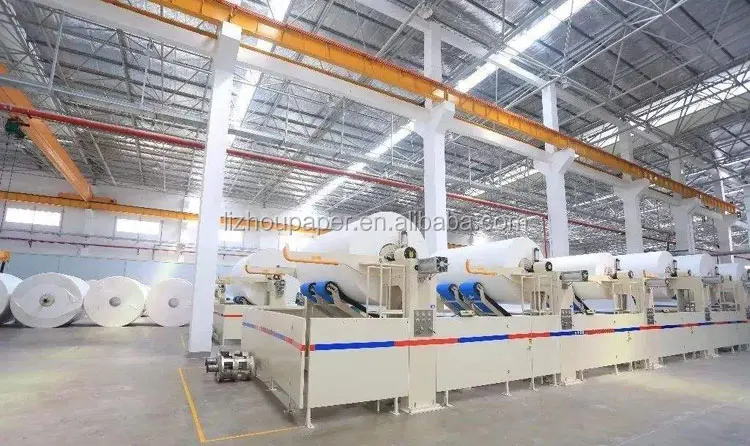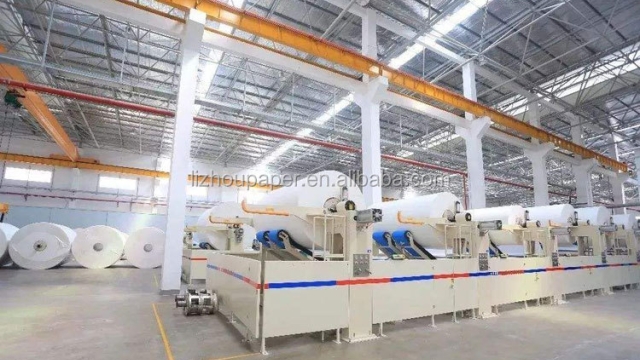The manufacturing process of toilet paper is often overlooked, as this everyday item has become an essential part of our lives. Whether we are aware of it or not, the journey from the raw materials to the finished product involves a series of fascinating steps that ensure we can maintain personal hygiene and comfort. In this paper manufacturing guide, we will peel back the layers and delve into the behind the scenes world of toilet paper production.
It all begins with the humble tree, specifically softwood trees like pine or spruce, which provide the primary source of cellulose fibers needed for manufacturing. These trees go through a stringent process of harvesting and debarking, followed by chipping into small pieces called wood chips. These chips are then cooked and treated, breaking down the lignin and releasing the cellulose fibers. From this pulping process, a thick liquid mixture known as pulp slurry is formed.
Next, the pulp slurry undergoes a series of refining and cleaning stages, which remove impurities such as dirt, bark, and other unwanted substances. This refining process helps improve the quality and cleanliness of the fibers, ensuring a smooth and soft end product. Once the fibers are refined to the desired consistency, they are ready for the actual papermaking process.
The refined pulp is diluted with water and poured onto a continuously moving screen called a wire mesh. As the water drains through the mesh, the fibers begin to bond together, forming a thin web of paper. This web then goes through several drying processes, where heat and pressure are applied to remove the remaining water content. The resulting paper sheet, still quite moist, is then further pressed and dried until it reaches the optimal moisture level.
Now that we have a base paper sheet, the next step is to transform it into the toilet paper we are familiar with. This involves the delicate process of embossing and perforating, which gives the paper its signature softness and tearability. Additionally, the paper is often bleached to achieve that bright, clean appearance before it is finally wound onto large rolls and cut into the familiar rolls that we use in our bathrooms.
By diving into this toilet paper manufacturing guide, we gain a newfound appreciation for the intricate process behind a product that we often take for granted. From the trees in the forests to the rolls in our bathrooms, every step along the way plays a crucial role in ensuring the production of high-quality toilet paper. So the next time you reach for a roll, remember the unraveling truth of its origins and the remarkable journey it has taken to bring convenience and comfort into our lives.
1. Production Process Overview
Toilet paper manufacturing involves several essential steps to create a product that we often take for granted. This guide will provide an overview of the paper manufacturing process specifically for toilet paper production.
The process typically begins with the sourcing of raw materials, primarily softwood and hardwood trees. These trees are harvested and transported to pulp mills, where they undergo a series of mechanical and chemical processes to extract the wood fibers. Once the fibers are separated, they are cleaned and bleached to create a high-quality pulp.
Next, the pulp is mixed with water to form a slurry and then passed through screens to remove any impurities. The resulting pulp mixture is then poured onto a moving mesh conveyor belt, forming a continuous sheet. This wet sheet passes through a series of heated rollers, which exert pressure to remove excess water and create a drier, more consolidated sheet.
After the initial drying process, the paper undergoes further treatment to enhance its strength and softness. This may involve applying specialized chemicals, such as softeners or embossing agents, to achieve the desired characteristics. Once treated, the paper is wound onto large rolls, ready for the final phase of production.
In the last step, the large rolls of paper are cut into smaller rolls of standard toilet paper size. These rolls are then packaged and prepared for distribution to retailers and consumers. From the sourcing of raw materials to the final packaging, toilet paper manufacturing involves a complex and precise process to ensure the production of a product that meets the needs of millions worldwide.
Stay tuned for the next section of this guide, where we will delve deeper into the manufacturing specifics of toilet paper!
2. Raw Materials and Equipment
In order to produce high-quality toilet paper, the right combination of raw materials and equipment is essential. Here, we will explore the key elements involved in the manufacturing process.

First and foremost, the primary raw material used in toilet paper manufacturing is wood pulp. Wood pulp is derived from various types of trees, such as pine or eucalyptus, through a pulping process. This process involves breaking down the wood fibers to create a soft, fibrous material that will later form the basis of the toilet paper.
Next, water is a crucial component in the manufacturing process. It is used to blend with the wood pulp and create a pulp suspension, which is then further refined and processed to enhance the quality and texture of the final product. The right amount of water is carefully measured and added to ensure the desired consistency is achieved.
In terms of equipment, the key machinery used in toilet paper manufacturing includes a pulping machine, which is responsible for separating the wood fibers from the raw materials, and a refining machine, which further processes the pulp to remove any impurities. Additionally, a paper machine is used to form the toilet paper itself, where the pulp mixture is spread onto a wire mesh and dried to create thin, continuous rolls of tissue.
By using the right raw materials and equipment, toilet paper manufacturers are able to produce a product that is both soft and absorbent, meeting the demands of consumers worldwide.
3. Quality Control and Sustainability Practices
In toilet paper manufacturing, ensuring consistent quality and implementing sustainable practices are of utmost importance.
To maintain quality control, manufacturers conduct thorough inspections at each stage of the production process. Sophisticated machinery is used to monitor parameters such as paper thickness, strength, and absorption levels. This helps ensure that the final product meets the industry’s stringent standards for softness, durability, and overall quality.
Sustainability is another key focus in toilet paper manufacturing. Many companies strive to reduce their environmental footprint by sourcing paper from responsibly managed forests. By using recycled or sustainably sourced fibers, manufacturers minimize deforestation and help preserve natural resources. Additionally, some companies invest in renewable energy sources and employ water-saving technologies during the manufacturing process to further minimize their impact on the environment.
By prioritizing quality control and embracing sustainability practices, toilet paper manufacturers aim to provide consumers with a product that is not only reliable and comfortable but also produced with the well-being of the environment in mind.
